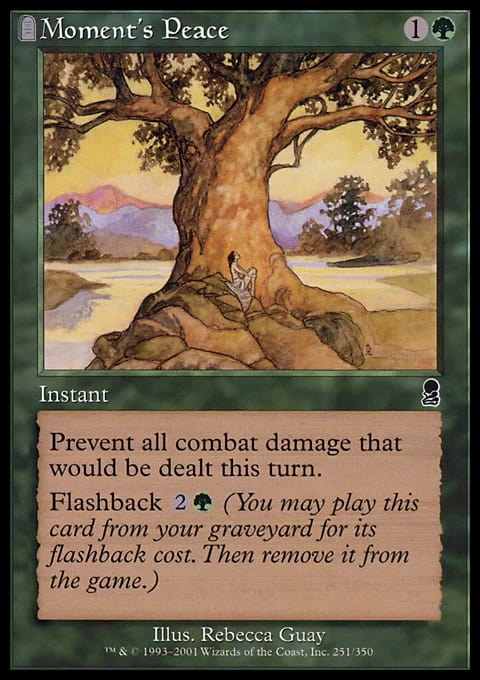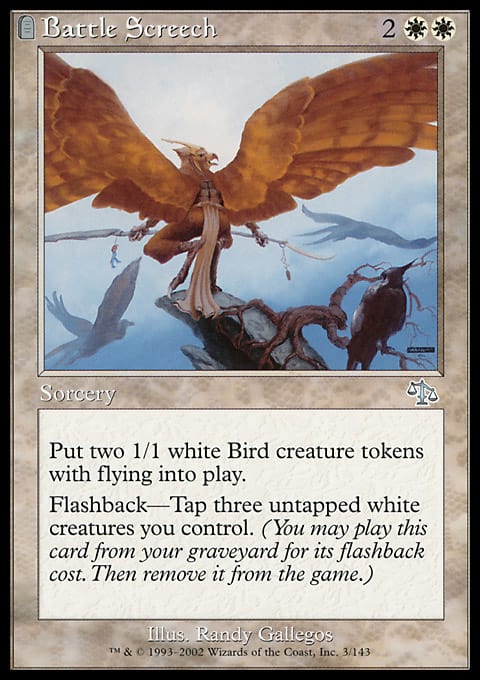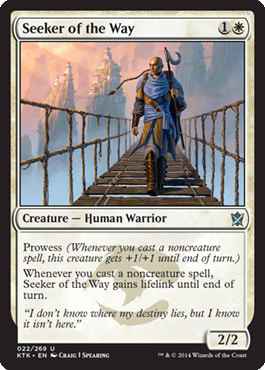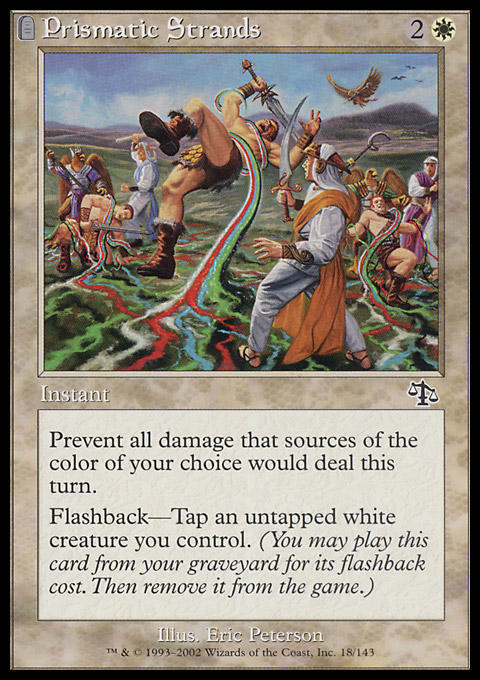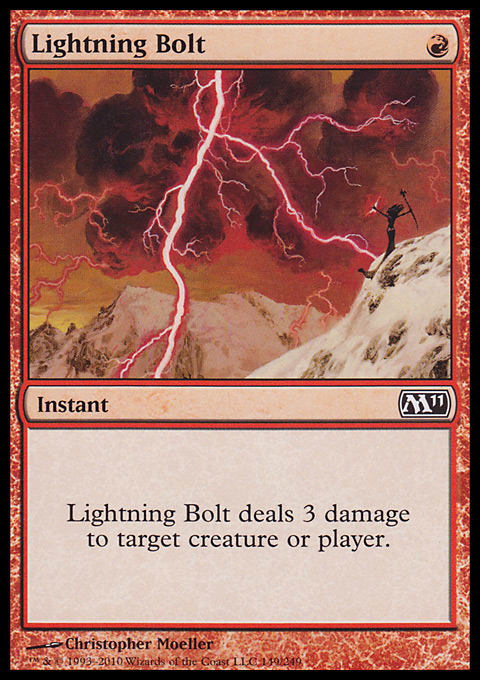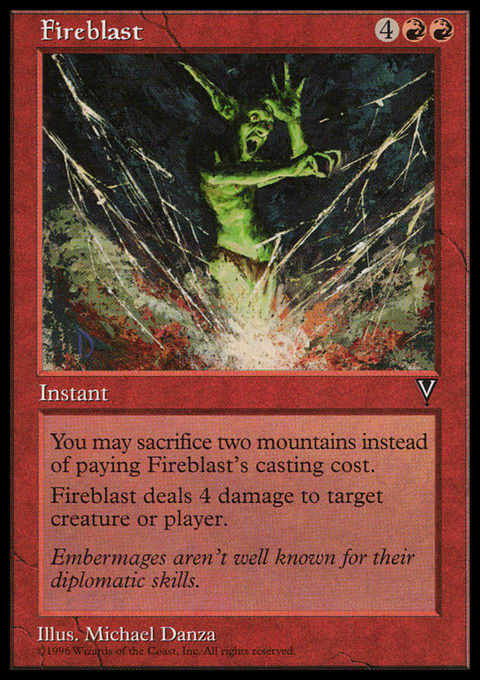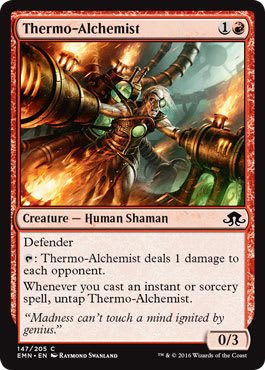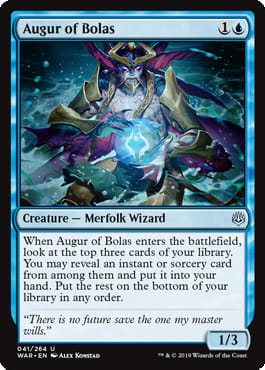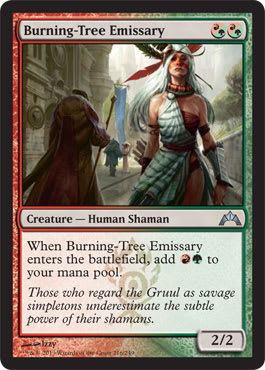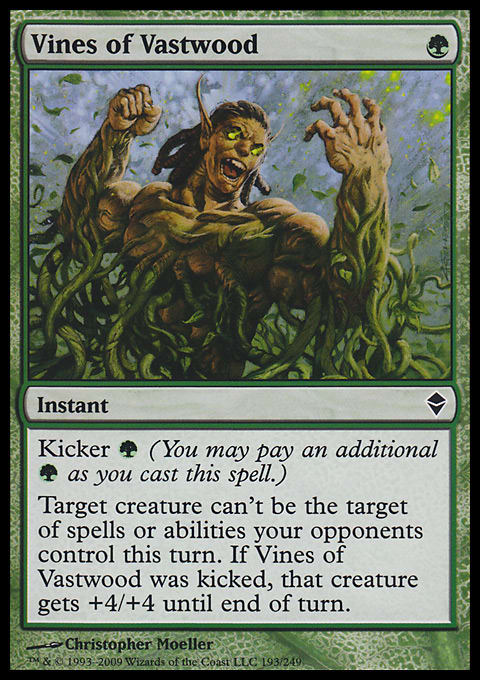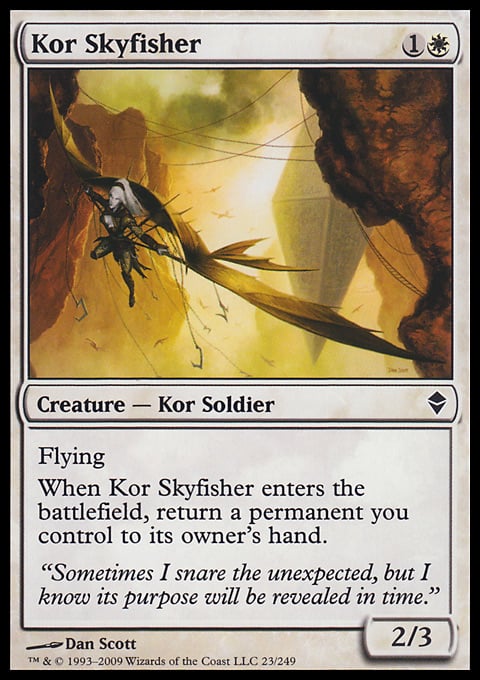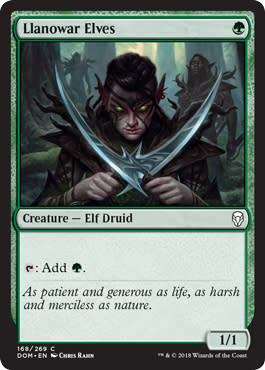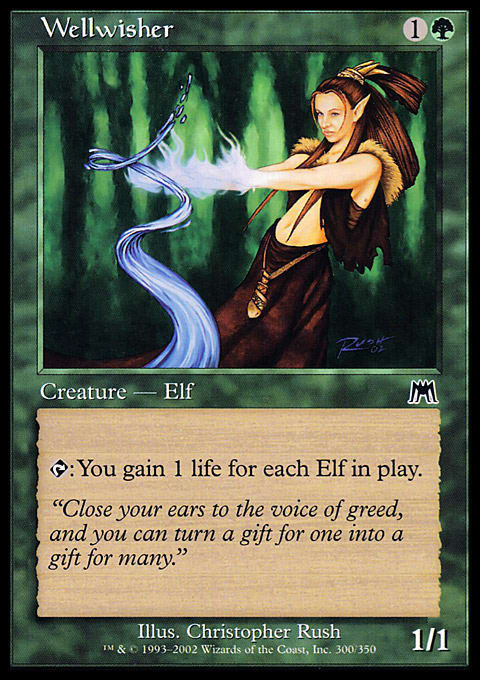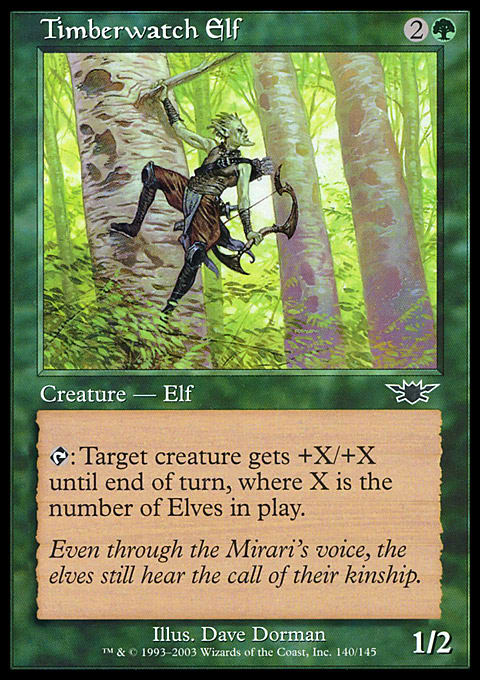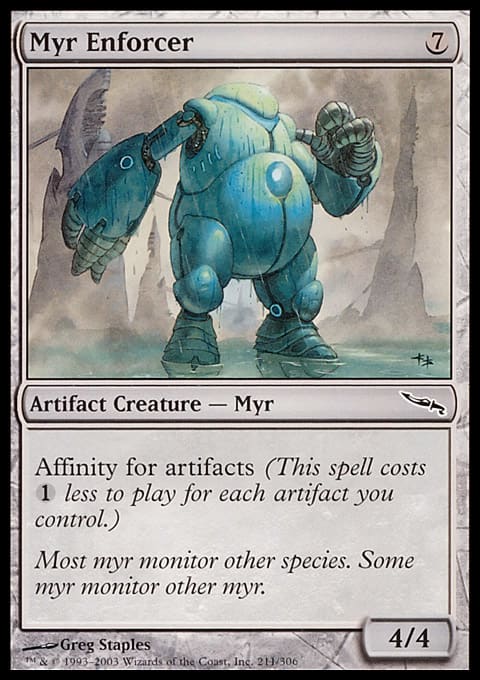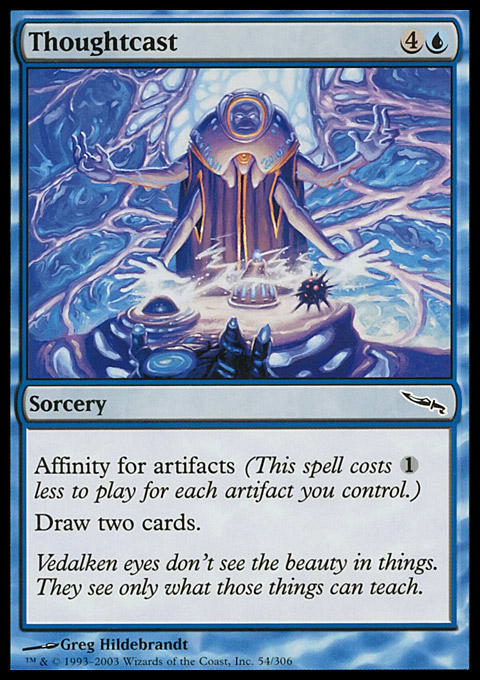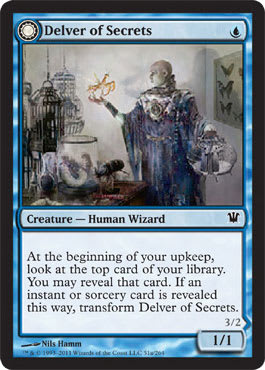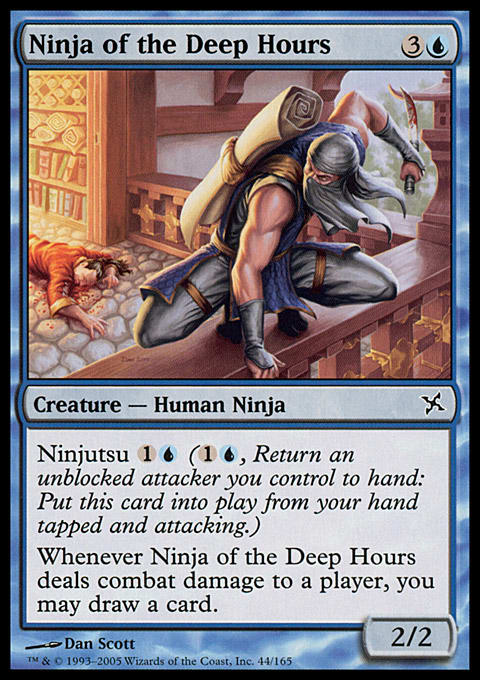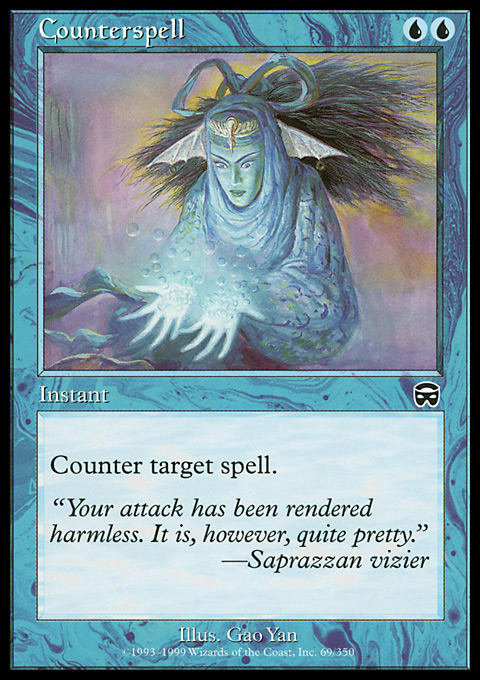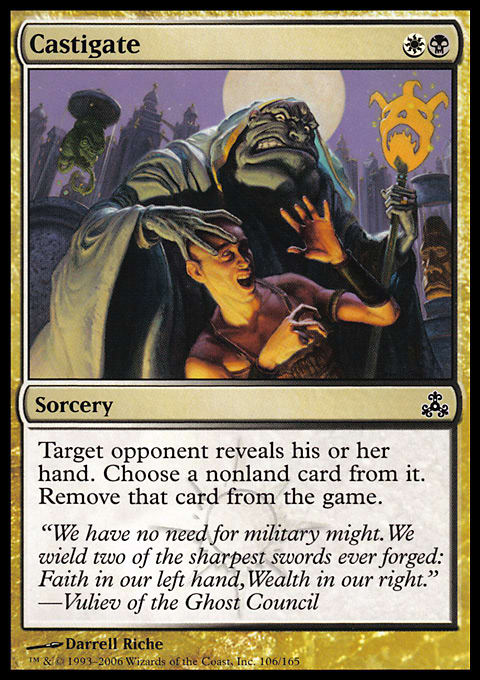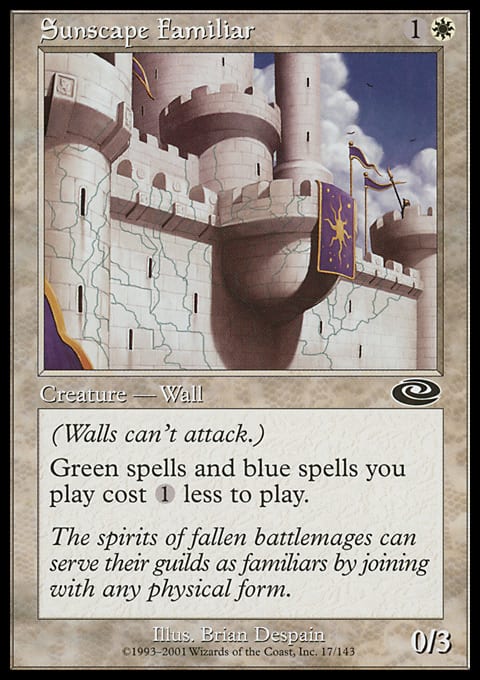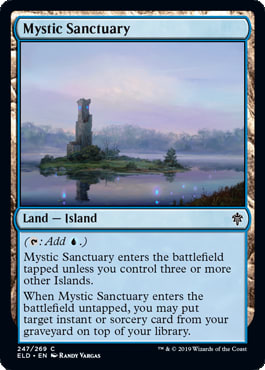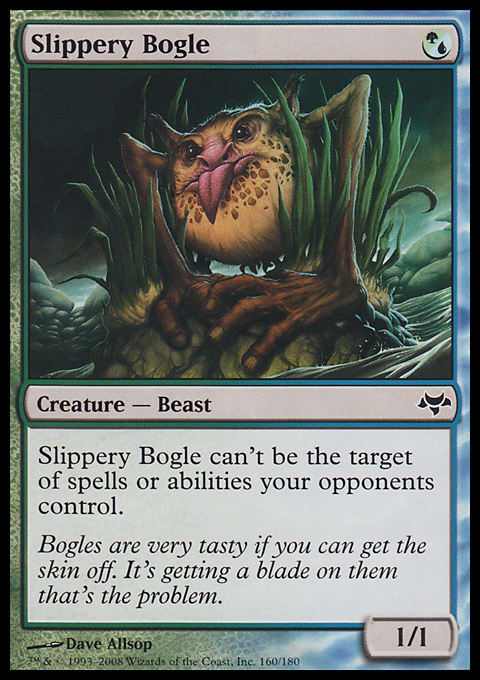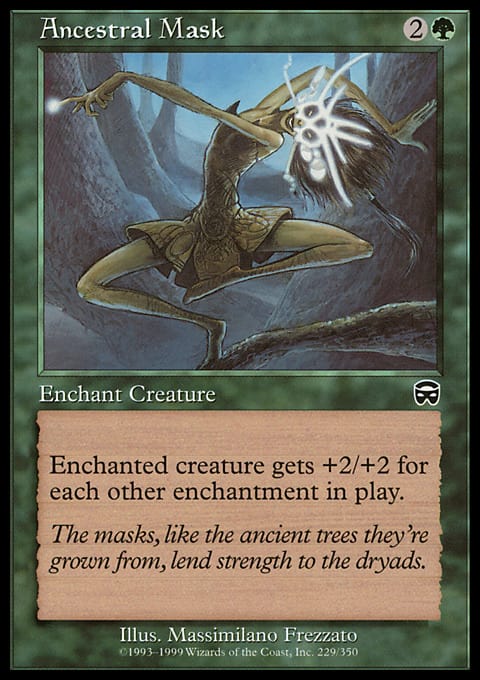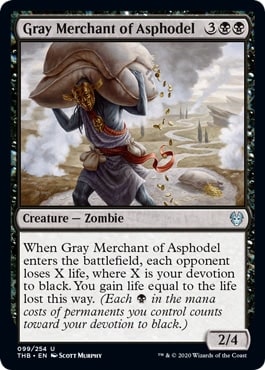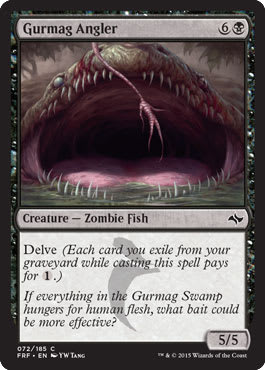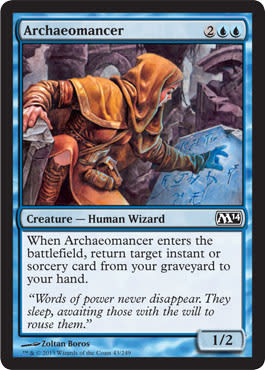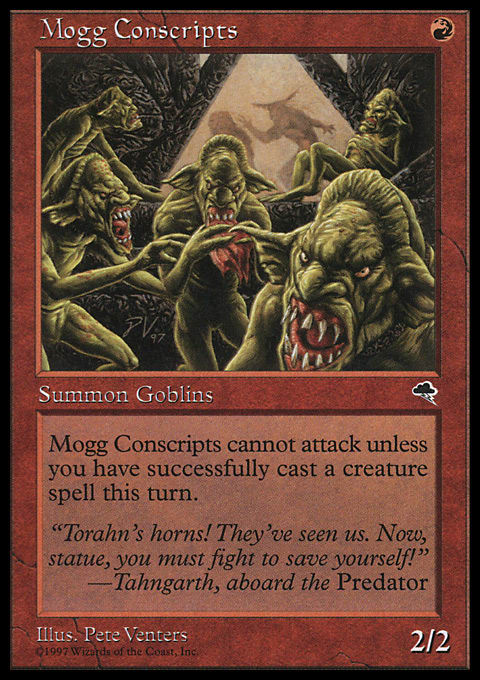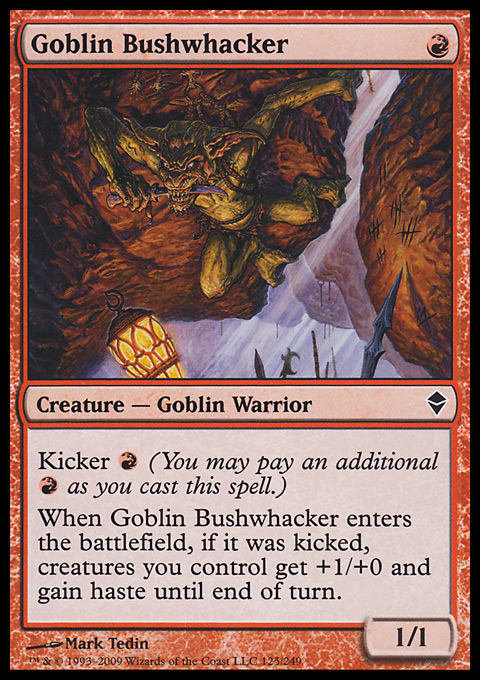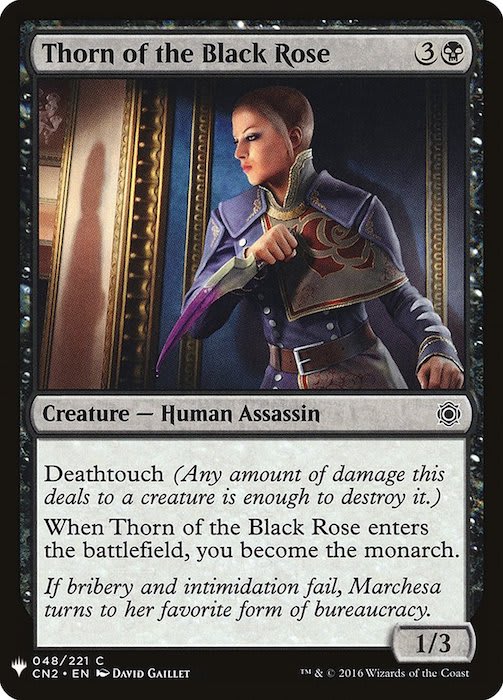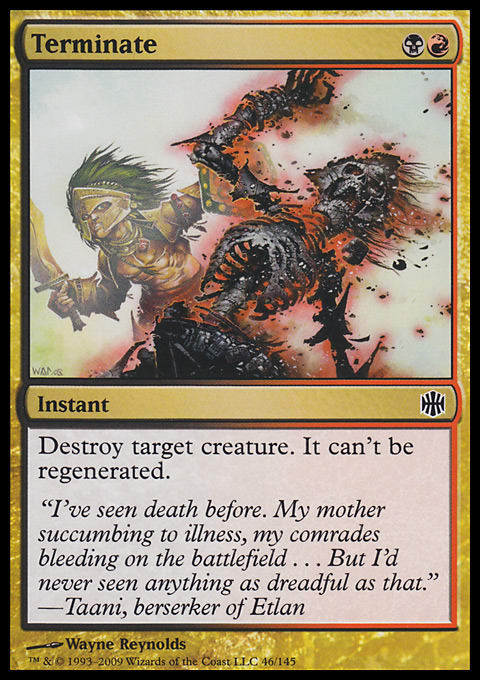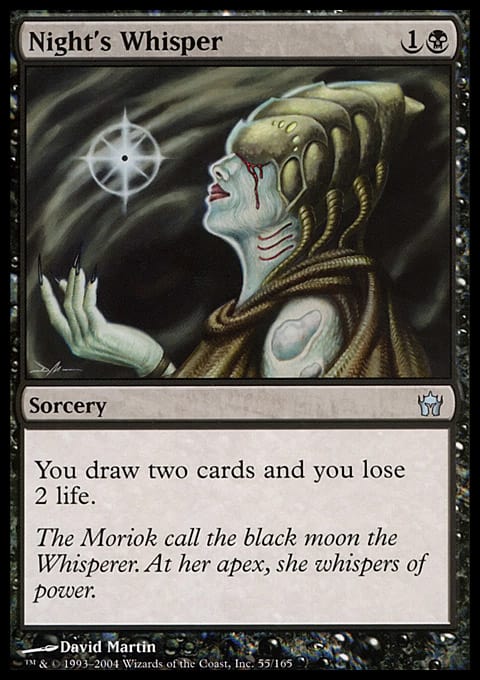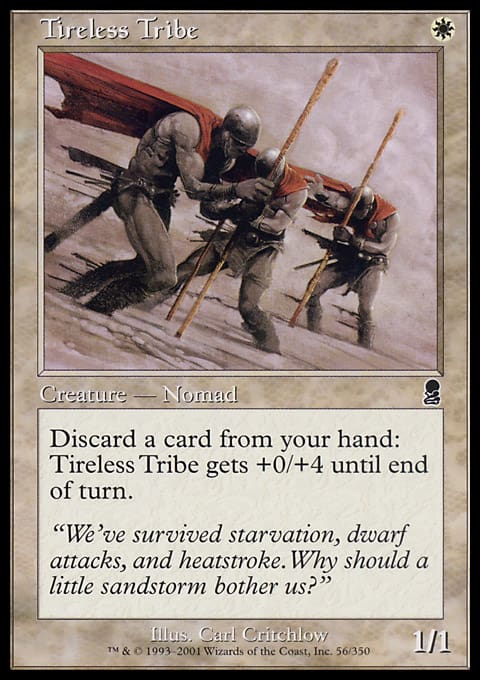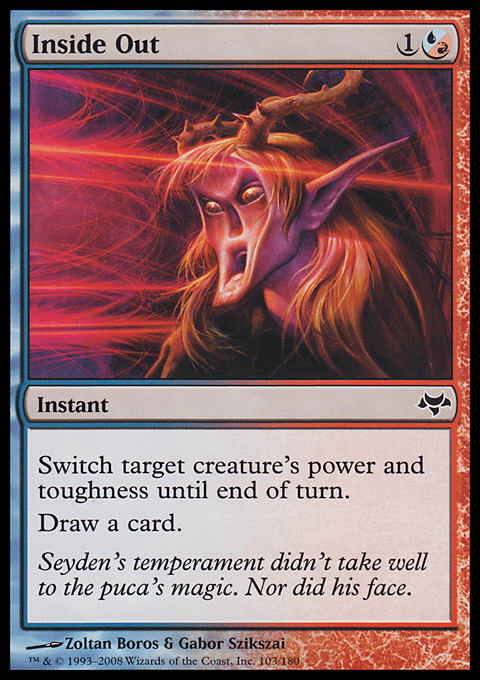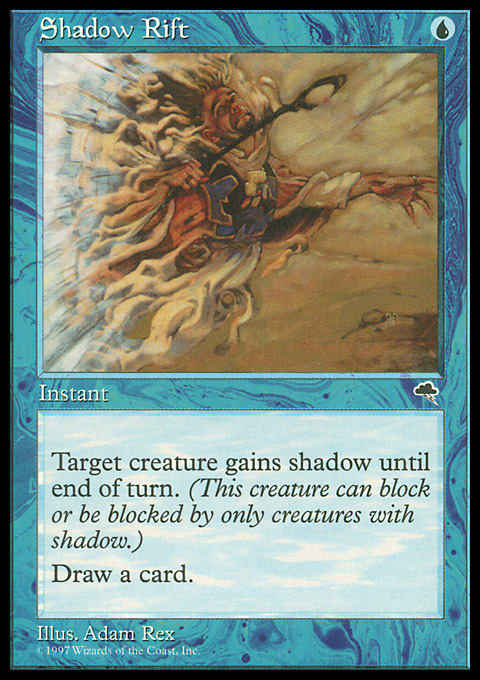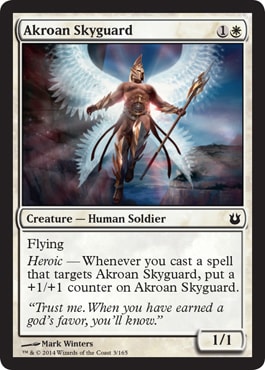Be sure to check out previous articles! Week one - introduction and main deck coverage, week two - lesser used cards in main decks, and week three - sideboard cards!
Welcome to week four of the Ultimate Pauper Elves Primer! This week I'm going to talk about the many matchups you can expect to face as you play the deck and how to beat them. I'm not going to be covering the sideboard too much, as that's going to make up the material for my fifth and final piece in the series. Instead, we're going to talk about the strengths and weaknesses of each matchup, how easy or difficult it is for us, and why.
Because of the sheer scope of matchups that I'm trying to cover and talk about, I'm not going to be able to go quite as in-depth as some may wish. Despite this, I'm going to try and provide a general overview of the best ways to combat each matchup. I will also be focusing a bit more on the Distant Melody variants as those are both what I have the most experience with and given that they're still being played much more frequently over the Mono-Green builds. Regardless, you'll often find that the Mono-Green variants play somewhat similarly, so more often than not you'll likely find the way the matchups to be similar as well - just without the reliance on Distant Melody and Viridian Longbow pre-board.
With that, let's dive right on into the many matchups that Pauper has to offer us!
Tron
Ah yes, Tron. The current boogie man of the format, Tron has become arguably the top dog of the Pauper format and thus is a perfect place for us to begin. There's a lot of different ways Tron decks are built, with some being similar and others being completely their own thing. I'm going to focus on three overarching play styles of Tron lists here: ones that focus on Fog effects, ones that are more creature-based, and ones that rely more heavily on removal.
The current most popular build is Fog Tron, utilizing Moment's Peace and Stonehorn Dignitary alongside a Flicker combo to keep you from dealing them any sort of damage. Rhystic Tron lists, while different, also rely heavily on blanking opponents' attacks. The trick with these is that even if your opponent has you locked out so you can't attack and utilize a Timberwatch Elf to win, you can keep going and try to find something like a Viridian Longbow, Harsh Sustenance, or similar to beat them. This can take a lot of patience, and may even take so long that your opponent can be at risk of timing out if you're playing on Magic Online. Still, it's very winnable and as a result, I actually find this to be one of the best matchups for Elves in the current meta.
Creature-based Tron is basically comprised of the more classic Temur Tron lists. This means ones that rely on Fangren Marauder, Ulamog's Crusher, and Rolling Thunder to win the game. The key to this matchup is largely spitting out creatures as quickly as possible and taking down your opponent before they can fire off a Rolling Thunder. Without something like Wrap in Vigor our numerous copies of Spidersilk Armor, it can be very difficult to survive and/or come back from a Rolling Thunder hit. Even if you aren't at risk of being taken out by Rolling Thunder, a quickly dropped Ulamog's Crusher can be devastating if you have a slow start. If you can avoid these and snap off a Distant Melody to go wide or else stick a Timberwatch Elf, you should win this match with ease.
The more removal-based lists are much trickier for us to deal with. These lists are closer to what we saw before the Fog variant became the popular choice. In them, you'd often see one-ofs like Lightning Bolt, Doom Blade, Electrickery, Fire // Ice, and more. These decks would also utilize plenty of countermagic and Flicker loops to make sure they were constantly stocked up on removal. All of this ensured that they would be able to control the board, especially against a creature-focused deck like ours. This gets worse the longer the game goes on, so it comes down to trying your hardest to fight back against them. Post-board gets a bit easier since you also then get access to board wipe prevention, graveyard hate, and additional kill spells to close out the game, but even then you're still in for quite a challenge.
Boros Bully
Boros Bully - aka Boros Weenies or Boros Tokens - has been one of the newer decks brought to the scene. It made its first showings about a year ago when brewer Deluxeicoff started playing with and fine-tuning it. It wasn't long before others started doing the same. This list takes some of the ideas from Boros Monarch and especially the more aggressive Kuldotha Boros list that preceded it. Rather than focusing on getting out a bunch of small bodies on the ground, the deck relies on taking to the skies with a bunch of Squadron Hawks and Bird tokens made by Battle Screech. Once they're lined up on the field, they then attack and get supercharged thanks to Rally the Peasants. As they set up, they also utilize a slew of removal spells as well as Prismatic Strands to hold you back.
This all makes for quite a challenge for us. Unlike Boros Monarch lists, which can often be a piece of cake for us, this deck is difficult. If we can't kill them quickly - which can prove tough due to the removal and fog effects - then they can fly over our board and take us down. This is one of the reasons why you see lists often running a lone Spidersilk Armor in the main deck. It's important to note that a main deck Spidersilk Armor can also help because Boros decks often utilize a single Electrickery in their main deck as well, so having one Armor can allow you to have a way to beat it.
Viridian Longbow can also help pick off the opposing tokens as well. Remember that even if your opponent is using Prismatic Strands to stop you from doing so, you can also use the morph ability on your Birchlore Rangers to cast it as a face-down Colorless creature. This ensures that it can push damage through, even past Strands, and can make your Viridian Longbows always take down their small fliers. Wellwishers are also big game if you can get them to stick on the board, as you can gain so much life that you can make their attacks inconsequential.
Burn
Burn is one of our hardest matchups. The deck wins by, well, burning us to death with spells like Lightning Bolt, Chain Lightning, Rift Bolt, Fireblast, and more. There will be times when they've killed you before you're really able to do anything at all. Having Thermo-Alchemist both acts as a blocker to get in the way of our attackers and as a way to magnify every one of their burn spells hurts tremendously. What's more, nearly every instant and sorcery in their deck is removal so that they can take out anything that would stop them from achieving their victory. They can even do double duty with the likes of Searing Blaze and burn us while also taking out our creature.
As a result of all of this, this matchup can be very difficult to navigate. My best advice is to try and play out your creatures in a way that maximizes what you can get on the board. If you play a Wellwisher, don't expect it to stick around for any activations. This is why we sometimes play Essence Warden. If you're expecting a lot of Burn, then you'd better be stuffing your deck with the card. Post board bring in every life gain card and a small amount of Electrickery and Blazing Volley hate. You don't want too much of the latter since even if they don't have these cards, you're still going to be facing a very uphill battle. Stick with it, try your best to grind them out, and don't be discouraged if you lose.
Izzet Faeries/Delver
Izzet Delver is making quite a bit of a come-back since we lost Gush (and Daze, for those that might've used it). That said, it's often times not even running the namesake and has thus become more of a dedicated Faeries build - although you can see some ever-dedicated players still rocking the old Delvers. The deck is coming back thanks largely to cards like Mystic Sanctuary and Faerie Seer having been printed since those Blue Monday bannings. It still plays out more or less the same: play faeries, counter opponents' spells with Spellstutter Sprite and Counterspell, use removal when needed, and they also will pick up their faeries or Augur of Bolas with the help of Ninja of the Deep Hours.
By and large, the matchup still plays the same as it always has. Go low to the ground, bait out countermagic and removal as best you can, and go as wide as possible before they can gain the advantage. This can be tough with the deck's constant cantripping and library manipulation, but it's far from unwinnable. That said, it's imperative to win Game 1, as post board gets even harder for us. This is because not only do they have the removal that made it a somewhat challenging matchup from Game 1, but they also get to bring in Electickery and Swirling Sandstorm. This makes for a truly uphill battle in games two or three, so it's important that we make sure we get in that early win.
Again, because of the small fliers, the main deck copies of Viridian Longbow and Spidersilk Armor can be important here if you're running them. Wellwisher also fills a similar role here as it does in the matchup against Boros Bully as it can help you stay alive longer to stabilize and out-grind them against their swath of removal and countermagic. It's also important to note that your bigger spells, i.e. Lys Alana Huntmaster, Distant Melody, Lead the Stampede, and Timberwatch Elf, can be difficult for opponents to Spellstutter, so keep that in mind when playing around their countermagic. Otherwise, just do your best to hit hard, hit fast, and if that fails, have patience and battle through it until you can no longer do so.
Stompy
Next up is one of the premier aggro decks of the format: Stompy. Stompy is a deck that wins by dropping a solid number of two-power creatures quickly and swinging in, pumping them up as necessary to ensure they push as much damage through as possible. The deck is and has been one of our easiest matchups. This is because we can both swarm the board with enough blockers to hold them at bay while we set ourselves up for a lethal attack and gain lots of life with Wellwisher and the like. The matchup did get a bit more difficult for us with the printing of Savage Swipe in Modern Horizons, however. Previously they would often not have a lot of removal until they got to Game 2 where they could bring in cards like Epic Confrontation, Gut Shot, and even Viridian Longbow.
Ultimately this matchups really comes down to whether or not they can take you down quickly. If you can either create a ton of Elves fast, or else stick the landing on a strong life-gain spell, then you should have this one in the bag.
Boros/Mardu Monarch
Boros Monarch is the classic Boros build that we've come to know over the last few years. This deck relies on slowly building up its board by playing cards like Prophetic Prism and Alchemist's Vial and then picking them up with Kor Skyfisher and Glint Hawk. Once it's built up enough, they play Palace Sentinels to gain the Monarch and back it up with Prismatic Strands. All the while, they utilize removal like Lightning Bolt and Galvanic Blast to both take out problematic creatures as well as push extra damage through to close out the game. Sometimes you may see them also run some cards like Okiba-Gang Shinobi - hence where the deck sometimes gets called Mardu Monarch - but it's not always something you can expect to see pop up.
Believe it or not, this matchup is actually pretty easy for us often times in Game 1. The reason for this is often times our opponents are slow to start, playing tap lands or else playing only one creature and/or artifact or turn. This means that while they play on building up, the deck does it at a glacial speed. In fact, I recall having seen a joke in the past that the best explanation of the deck is that it does nothing for a number of turns and then suddenly kills you, which is fairly accurate. Because of this, we're often able to set ourselves up quite strongly early on and can take off quite speedily against their slow starts.
That's not to say they can't win handily, however. They still run enough removal to battle back and their creatures combined with Prismatic Strands can block us out for days. What's more, they - like Boros Bully - also often run a lone copy of Electrickery to deal with not only our Elves but Izzet Faeries and the many 1/1s in Bully. All of this can make it quite difficult, so hang in there, try to gain life with Wellwisher as you're able, and grind it out until you're able to emerge victorious.
Elves
Ah yes, the mirror. This matchup often goes one of two ways: either one player goes off significantly faster than the other and gets in a fast kill with Timberwatch Elf or the game comes to a screeching halt. While it's more likely that the former happens, as someone is usually likely to have a blistering hand that the opposing player simply can't answer, it's also just as likely that we see the latter. What makes the matchup come to a halt is Wellwisher. Not only does it gain you life for every elf on both sides of the battlefield, but it also effectively negates Timberwatch Elf in the process. This means that players are often times able to stabilize to such a degree that neither can outpace the other. This is what makes mirror-breaking cards like Viridian Longbow so crucial to have in the main deck so that you still have a way to win even if the board state clogs up.
As one additional note: if you find yourself in a matchup with a Distant Melody build squaring off against a Mono-Green build, the Melody build is significantly more favored. This is because they're usually able to dig far deeper into their deck than the Mono-Green version and play more cards, including their sideboard options post-board. In addition, as I've mentioned in previous parts of this primer, I must reiterate again that many elves count both sides of the board, so be mindful of that.
Affinity
Affinity is a deck that riffs off of the many artifact based aggro decks that have come before it - including its namesake. If you're familiar with the old Raffinity lists of old or even Legacy Affinity when that was popular, you might recognize this quickly. It looks like a far cry from the so-called Affinity lists in Modern which by and large run only one Affinity card in Frogmite, if that. The reason being is that unlike Pauper, Legacy, and original Mirrodin Standard, there's no artifact lands in the Modern format! We lose Cranial Plating in the trade-off, but what we're left with is still a potent deck for the Pauper format.
Affinity dumps massive creatures for little-to-no cost and kills hard and fast. If they're not attacking you with Carapace Forgers, Myr Enforcers, and Gearseeker Serpents, then odds are solid that they're Flinging Atogs directly at your face. As such, our primary goals are to race them, spit out as many tokens with Lys Alana Huntmaster as possible to chump block, and to gain as much life as we can with Wellwisher. Even this can be difficult with their Galvanic Blasts to pick off the real problematic creatures and of course the Atog which can both be flung as well as have Temur Battle Rage cast on it. Just try to race, but also know when to hold back a bit.
Mono-Blue Tempo
Much like Izzet Faeries, Mono-Blue Tempo (aka Mono-Blue Delver) was hit hard by the banning of Gush and Daze. This deck felt the Daze ban even more, as it was much more of a tempo deck that relied on the tempo advantage that Daze provided. Much like the Izzet deck, Mono-Blue Tempo got a tremendous boost recently thanks to not only Mystic Sanctuary but also the card Mantle of Tides. Lucky for us, this deck is still largely as easy as ever.
Remember how when I talked about the Izzet variant of this archetype, I said that Game 1 was the most important because you won't run into as much removal compared to post-board? The same thing applies to this matchup but multiplied multiple times over. The only real removal the deck runs is bounce spells which doesn't matter as bad for a deck like ours that spits out so many creatures so quickly. As such, Elves has a historically fantastic matchup against this deck. While Elves can still lose if we end up on the backfoot and get countered over and over again early on, it's highly favored and only gets easier post-board when we get access to more Spidersilk Armors, Scattershot Archer, and extra Viridian Longbows. Go as low to the ground as possible and you should be very likely to get there most of the time.
Orzhov Pestilence
Orzhov Pestilence, or Orzhov Monarch as it's sometimes called, is either an incredibly difficult matchup or a fairly reasonable one for us. It all depends on how our opponents build their deck. Some lists are much more control heavy, others are a bit more creature-focused. In metas where they're on the full control build, you're going to have a tremendously difficult time fighting them back. You'll face removal spell after removal spell and then eventually be locked out by the combo of Guardian of the Guildpact and Pestilence. The best advice I can give for this build is to just endure it and hope your opponent runs out of steam.
If you find yourself up against the more creature-heavy build, however, you stand more of a chance. Not only are you far less likely to run into early removal, but your opponent has a pretty slow start. While you still need to be careful of your opponent sticking their Pestilence and wiping the board, if you sequence your lines correctly for maximum value, you can get there quickly. In both of these versions, it should be noted that cards like Wellwisher, Viridian Longbow, and especially Elvish Vanguard are a few of your biggest MVPs. Vanguard is notably great because it's tough to take down with Pestilence alone. However, once they mow down the rest of your board, they can easily Chainer's Edict it away or else simply Doom Blade it.
Familiars
Familiars is pretty much what is left nowadays of the true combo decks in Pauper. While you can somewhat call Elves a combo deck, it's more of an aggro-combo deck that feels somewhat like Legacy High Tide might if it won by attacking. Familiars instead wins by creating an infinite combo that takes out an opponent.
The way the deck wins is you use the card Sunscape Familiar to lower the cost of your spells. Once done, you can establish loops with the likes of Ghostly Flicker and Snap. The deck used to use a creature like Mnemonic Wall or Archaeomancer to generate a Flicker Loop but instead does so now with Mystic Sanctuary and Sea Gate Oracle or Mulldrifter. You can go through your deck enough until you find a copy of Sage's Row Denizen. Now as you use your Flicker loop and Flicker Sea Gate Oracle over and over again, you also mill your opponent's entire deck.
Elves has a pretty smooth matchup here. Attacking is really easy a lot of times, although more recently the deck has begun to win using Prismatic Strands and Stonehorn Dignitary much like other decks of the format. Thus if we can't aggro them out, we instead take the approach like we do with Fog Tron and utilize Viridian Longbows or, in the case of post-board games, Harsh Sustenance and the like. Even if you don't take them out directly with Longbow, you can also mow down their creatures to prevent them from being able to kill you as you continue to set up the board and/or keep yourself in the game.
Bogles
This is another matchup that is much more of a race than anything and largely comes down to who ends up drawing better. Unlike Affinity or Burn, Bogles has virtually no interaction and simply tries to go taller than we can deal with and tries to do it faster. Bogles does this by playing hexproof creatures and suiting them up with cheap and powerful aura like Ethereal Armor, Rancor, and Ancestral Mask. Luckily, we can also go super tall with Elvish Vanguard and Timberwatch Elf. If we also go wide enough, it's not hard to say that we can match their suited-up monstrosity handily. Wellwisher is once again a big player in this matchup - especially if you're unable to find any Vanguards or Timberwatches.
I have two small notes for this matchup. The first is that the Melody builds are much more likely to be effective here than Mono-Green builds. The reason is that they simply will see more cards, allowing them the best chance at going taller or finding their lifegain creatures. The second is that if you happen to be running Spidersilk Armor in your main deck, I'd be careful about casting it. Much like how many of our Elves care about the number of Elves on the whole battlefield, Ancestral Mask also cares about all players' enchantments. The last thing you want to do is beef up your opponents' creatures in a racing matchup.
Mono-Black Control
Mono-Black Control is stone cold one of our most difficult matchups. In fact, it's so difficult that when I find myself paired against it I immediately treat it as an auto-loss. They're so removal dense that we often stand little to no chance. It's possible to grind them out a bit if they don't have Cuombajj Witches, but it's a genuine challenge. We get a tiny bit more of a punch post-board with Spidersilk Armors but even that isn't enough most of the time. My honest suggestion here is to just try to do your thing, hope they draw poorly, and don't get too discouraged if you lose because boy howdy it's gonna happen a lot.
Dimir Control
Dimir Control lists, on the other hand, are much easier to deal with. These decks often one-for-one trade us on resources, so if we can stick with it, there's solid odds they'll run out of them before we do. Most players think that it can be tough going against something like this and that Elves is a deck for racing and not grinding. As I showed during the Pauper Premiere League in my match against Brian Coval, it certainly can. Brian was on a Teachings list, which is a much more true control deck than the Dimir Control variants that rely on controlling just long enough to stick some strong creatures and kill you. No matter which version, the best advice I can give you is just stick with it. Either go hard and fast, or just try and outpace them if it goes to the long game.
Jeskai Blink
I'll be honest with you: I've yet to run into an actual build of Jeskai Blink since the banning of Arcum's Astrolabe. It has, however, shown up mainly thanks to putting in a number of 5-0's in leagues since the banning. As the deck has completely abandoned the need for Glint Hawk and Kor Skyfisher, the deck has become a bit more control oriented. This likely means we're in for a harder match than ever, as the excess creatures have instead been replaced by both additional countermagic and removal. Couple that with Augur of Bolas making it harder for us to attack and we're in for a tough time.
Because I haven't had any experience playing against the deck in its post-banning form, it's probably the one I actually can't really tell you how to play against. It was already tough and challenging before the ban and, while it looks to be a bit more inconsistent in its mana, it's almost certainly harder than ever for us. Try your best, but don't beat yourself up too hard if you lose to this archetype.
Goblins/Red Deck Wins
Goblins and Red Deck Wins are by and large the same list. Both run cards like the ones pictured above, Mudbrawler Cohort, Foundry Street Denizen, and more. The differences boil down to whether or not they run more Goblins or else creatures like Valley Dasher and Jackal Familiar. The more dedicated Goblins lists also tend to run Goblin Sledder and Mogg Raider alongside Goblin Instigator and Mogg War Marshal.
Because both lists are very all-in aggro, we can beat them by both going wide faster than they can attack to kill us and we can also gain a ton of life. This matchup can become difficult - especially if we run into any Sparksmiths - but it can similarly be quite simple. Try to build your board up and get as many Lys Alana Huntmaster tokens online as fast as you can. Block, and gain life with Wellwishers and Essence Warden. Your creatures like Nettle Sentinel, Lys Alana Huntmaster, and Elvish Vanguard are also critical here because they can block the most effectively of the bunch.
Slivers
Slivers is another matchup that is either super easy or super tough and is often a race. Thankfully, though, they don't go quite as tall as tecks like Bogles, but they can go pretty wide. This can be problematic if you, as the Elves player, aren't able to do that quite so well. Because of how big their creatures get, they also make their creatures very hard for us to block well. The good thing is, they often don't pack any real removal, so it's easy for us to regain whatever damage we take thanks to Wellwisher.
The real issue is that they gain access to Virulent Sliver, which allows all their Slivers to hit us with poison counters as well. Even worse, Virulent Sliver's ability stacks, so one direct hit with two Virulents on the field gives us two poison counters. The best way to battle these back - as well as all of their Slivers - is to utilize your Viridian Longbow if you can. As long as you're able to go off reasonably well, you should win this matchup quite easily.
Rakdos Monarch
And here you thought Mono-Black Control was bad. This is Mono-Black with even harsher removal and is even more difficult for us to defeat. Thankfully, it's not very heavily represented in the metagame as it doesn't do the greatest against the rest of the field. For us, though, it may very well be the worst matchup we could hope to cross paths with.
Inside Out Combo
Remember how I said Familiars is the one true combo deck left in the format? Well that's only partially true. In actuality, Inside Out Combo - and the similar Izzet Blitz that barely exists after being one of the hardest hit decks by the Blue Monday bans - is still a minor contender. Losing Gush made the deck significantly weaker on multiple fronts, but thankfully the deck can still edge out some serious wins. It does this now utilizing the card Whiteout to be able to deal a ton of damage all in one shot,
Thankfully, you likely won't come across this deck too much anymore. Both this and Blitz are so rare now that I actually removed my Fog effects from my sideboard since I only ran them in the deck to beat those two decks. If you do run into it, however, stick your life gain as fast as possible. Viridian Longbow can take out Tireless Tribe after an Inside Out is used and can stop your opponent dead in their tracks. If you expect this more frequently at a more local meta or the like, I'd recommend utilizing Essence Wardens also and putting Moment's Peace into your sideboard.
Mono-White Heroic
Mono-White Heroic is like Bogles' mono-colored cousin. It's all about creatures going tall with auras and pump spells, much the same way. It simply doesn't utilize hexproof creatures. This both makes the deck more consistent but more fragile. Due to the second part, the deck's presence in the overall meta has dropped dramatically so you can expect it quite a bit less. When you do face it, however, utilize a lot of the same concepts as with Bogles. Do note, however, that unlike Bogles, Heroic uses protection effects a ton to get past your defenses. This means your lifegain effects will be much more valuable.
In addition, there is one card you really need to watch out for: Deftblade Elite. One it's suited up with a Cartouche of Solidarity or Ethereal Armor, that's usually gonna be all she wrote for your creatures. However, there is a way to get around the provoke ability that can save you and let you continue advancing your board. The trick is to play Birchlore Rangers, wait for the provoke trigger to resolve, thus untapping your creature, and then tap it down with the Birchlore Rangers' mana producing ability. This leaves your provoked creature unable to block and lets it stick around. You may take a little damage, but what does that matter when you end up winning?
I hope you've enjoyed this portion of the Ultimate Elves Primer. While I've covered quite a number of archetypes, there's much too many to hit every single possible matchup. Some decks like Acid Trip, Turbo Fog, Tortured Existence, Zombies, or Rally Gond are so fringe nowadays that it's not usually worth mentioning. Not only that, but you'll certainly find yourself running into a player rocking a brew at some point as you play more - especially at the local level. Take what you learn from the variety of matchups and playstyles and try to apply this experience as you play against the slew of decks that you may find yourself up against.
Next week I'll be back with one final piece: a sideboard guide discussing how to sideboard against a number of the matchups covered here today. I won't just be covering my own list, but those of both powerhouse player c_is_for_cookie as well as a Mono-Green build. Thank you so much for joining me on this journey to talk about my favorite archetype in the game. Until then!
Kendra Smith
Twitter: @TheMaverickGal
Twitch: twitch.tv/themaverickgirl
YouTube: Kendra Smith


















